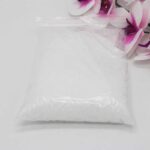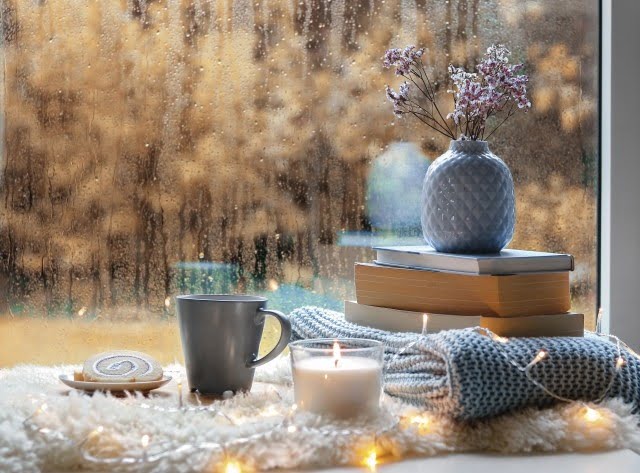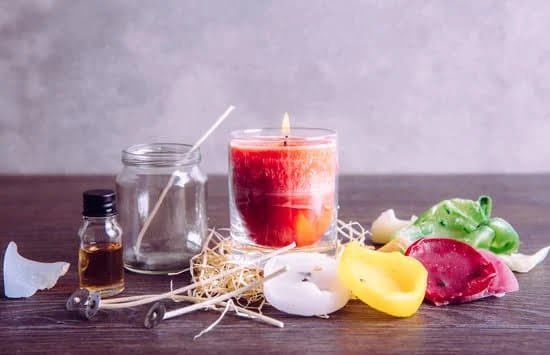Candle making is a popular and satisfying hobby for many craft enthusiasts. The key to creating beautiful and professional-looking candles lies in the process of making molds. Quality molds guarantee precise and consistent results, ensuring that your candles turn out just the way you envision them. In this article, we will explore the best way to make molds for candle making, and how they play an essential role in the candle making process.
Molds are crucial in candle making as they serve several purposes. First and foremost, they give shape to the molten wax, allowing it to cool and solidify into its desired form. Whether you want simple pillar candles or intricate shapes like flowers or animals, molds are essential for achieving uniformity in your candle designs. Additionally, using molds enables you to create candles with smooth surfaces, eliminating any imperfections that may arise from hand pouring techniques.
The benefits of using molds for candle making go beyond aesthetics. Molds provide stability during the cooling process, preventing the wax from sagging or deforming while it hardens. This ensures that your candles maintain their intended shape and size throughout their burning lifespan. Moreover, molds offer convenience by allowing you to produce multiple candles simultaneously, saving time and effort compared to individually pouring each candle.
Having proper molds can significantly enhance the quality and appearance of your candles. High-quality molds result in smooth finishes, defined edges, and balanced proportions. They also enable you to achieve detailed textures or intricate designs effortlessly. With a wide range of mold options available on the market, as well as alternatives such as recycled containers or DIY methods, finding the perfect mold that suits your specific candle making needs is entirely possible.
In this article, we will guide you through every aspect of making molds for candle making – from selecting different types of molds suitable for various purposes to purchasing the right mold based on size and design preferences. We will also delve into techniques for preparing molds before pouring wax and ways to troubleshoot common mold-related issues.
Additionally, we will explore the exciting world of custom mold-making and alternative methods to unleash your creativity and imagination in creating unique candle designs. Finally, we will provide tips on how to properly care for and store your molds so that they can withstand multiple uses and still be ready for your next candle making project.
Types of Molds for Candle Making
Introduction: The Importance of Choosing the Right Mold
When it comes to candle making, the type of mold you choose can greatly impact the final outcome of your candles. The right mold not only ensures that your candles are perfectly shaped but also allows for easy release and smooth surfaces. In this section, we will explore various types of molds commonly used in candle making and discuss their advantages and disadvantages.
Explore Traditional Molds
One of the most common types of molds used in candle making is metal molds. These molds are durable and can withstand high temperatures, which makes them ideal for pouring hot wax. Metal molds often come in a variety of shapes and sizes, allowing for versatility in your candle designs.
Another popular option is silicone molds. These flexible molds are known for their ease of use and excellent release properties. They are particularly useful when creating intricate or detailed candle designs due to their flexibility.
Plastic molds are also widely used in candle making because they are affordable and readily available. They come in different shapes and sizes, making them suitable for a range of candle designs. However, it’s important to note that plastic molds may not have as long a lifespan as metal or silicone molds.
Alternative Mold Options
If you’re looking to get creative or want to reduce waste, consider using recycled containers as candle molds. Glass jars, tin cans, or even teacups can be repurposed into unique mold options for your candles. Not only does this save money on purchasing new molds, but it also adds a personalized touch to your candles.
For those who enjoy a bit of DIY, creating your own custom molds is an exciting option. This allows you to experiment with different materials such as clay or latex rubber to achieve specific shapes or sizes for your candles. While this method requires time and effort upfront, it offers endless possibilities for creating truly unique candles.
Purchasing the Right Mold
When it comes to candle making, choosing the right mold is crucial for achieving the desired results. With so many options available in the market, it can be overwhelming to decide which mold best suits your needs. This section will guide you through the factors to consider when purchasing molds for candle making and help you make an informed decision.
Factors to Consider
Before purchasing a mold for candle making, there are several factors you should take into account.
Firstly, consider the size of your candles. Molds come in various sizes and shapes, so it’s important to select one that matches your desired candle dimensions. A mold that is too small may result in overflowing wax or irregular-shaped candles, while a mold that is too large may lead to excess wastage of wax.
Secondly, think about the material of the mold. The most common types of molds used in candle making are metal, silicone, and plastic. Each material has its advantages and disadvantages. Metal molds distribute heat evenly but require preheating before pouring wax. Silicone molds are flexible and enable easy removal of finished candles but may not be suitable for all types of wax. Plastic molds are affordable and lightweight but can warp with repeated use.
Lastly, consider the design or shape you want for your candles. Molds come in various designs – from plain cylindrical shapes to intricate patterns – allowing you to create unique and eye-catching candles. Choose a mold that aligns with your creative vision and desired aesthetic.
Different Sizes, Shapes, and Designs Available
Once you have determined your requirements regarding size, material, and design, explore the market for available options. Molds are widely accessible both online and in specialized craft stores.
Online platforms offer a vast selection of molds for candle making with detailed product descriptions and customer reviews which can aid in decision-making process. Craft stores often have physical displays where you can examine different molds up close, allowing you to assess the quality and suitability for your needs.
In addition to traditional molds, there are also niche options available. For example, you can find molds specifically designed for making tea light candles, floating candles, or shaped candles. These specialty molds can add a unique touch to your candle creations.
Choosing the right mold for candle making is essential to ensure successful outcomes. By considering factors such as size, material, and design, you can make an informed decision that meets your specific candle making needs. With the right mold in hand, you’ll be one step closer to creating beautiful and professional-looking candles.
Preparing the Mold for Candle Pouring
Before pouring wax into a mold for candle making, it is essential to properly prepare the mold. This preparation process ensures that the candle will release easily from the mold and helps to maximize the lifespan of the mold itself. Here are some techniques and tips for preparing your molds before pouring wax:
- Cleaning the Mold: It is crucial to clean your mold thoroughly before each use. This removes any residue or dust that may have accumulated on the surface, ensuring a smooth and clean finish for your candles. Depending on the type of mold you are using, you can wash it with warm soapy water or wipe it down with rubbing alcohol.
- Applying a Release Agent: To ensure easy release of the finished candle from the mold, applying a release agent is recommended. A release agent is typically a liquid or spray that creates a barrier between the wax and the mold’s surface, preventing sticking. Some popular options for release agents include vegetable oil, silicone sprays, or specialized mold releases available in crafting stores.
- Preheating the Mold: In certain cases, preheating your mold can help to prevent issues such as air bubbles or uneven surfaces in your candles. Preheating can be done by placing your empty mold in an oven set at a low temperature for a short period of time (make sure to follow specific instructions provided with your molds).
By following these steps for preparing your molds before pouring wax, you can ensure better results in terms of ease of release and overall appearance of your finished candles. Additionally, proper preparation also helps to extend the lifespan of your molds by minimizing wear and tear.
| Preparing the Mold | Techniques/Tips |
|---|---|
| Cleaning | Thoroughly wash with warm soapy water or wipe down with rubbing alcohol |
| Applying a Release Agent | Use vegetable oil, silicone sprays, or specialized mold releases |
| Preheating | Place empty mold in preheated oven at low temperature for short period of time |
By following these techniques and tips for preparing your molds before pouring wax, you can enhance the overall candle-making experience and achieve better results in terms of ease of release and appearance.
Creating Custom Molds for Unique Candle Designs
When it comes to candle making, creating unique and custom designs can add a special touch to your creations. One way to achieve this is by creating custom molds. By making your own molds, you have the freedom to create candles in any shape or size you desire. Here is a step-by-step process for creating custom molds for specific candle designs:
- Design your mold: Start by visualizing the shape and size of the candle you want to create. Sketch out the design on paper, considering details like curves and angles. This will serve as your guide when sculpting the mold.
- Choose your material: There are various materials you can use to make your custom mold, such as silicone or latex rubber. These materials are flexible and durable, which allows for easy release of the candle once it has set.
- Gather your tools and materials: Depending on the type of mold you’re making, you may need additional tools such as sculpting clay or plaster. Make sure you have everything you need before starting the process.
- Sculpt the mold: Using clay or other suitable material, form a positive representation of your desired shape. Smooth out any imperfections and ensure that the surface is clean.
- Create a mold box: Construct a box around your positive representation using cardboard or other sturdy material. This will serve as a containment system for pouring the mold-making material.
- Mix and pour the mold-making material: Follow the manufacturer’s instructions for mixing and pouring the mold-making material into the box, covering your positive representation completely.
- Allow time for curing: The mold-making material will need time to cure and harden completely before use. Follow the recommended curing time provided by the manufacturer.
- Demold carefully: Once fully cured, carefully remove the hardened mold from its containing box. Remove any clay or plaster remnants from within the newly formed cavity.
- Test and adjust: Before using your custom mold, pour a small test candle to ensure that the mold works as intended. Make any necessary adjustments to the mold if needed.
By following these steps, you can create custom molds that will allow you to bring your unique candle designs to life. Experiment with different shapes and sizes to produce candles that truly stand out. Don’t forget to properly clean and store your custom molds after use, ensuring they are ready for future projects.
Troubleshooting Common Mold-related Issues
Candle making can be a rewarding and enjoyable hobby, but sometimes issues with molds can arise. Understanding common mold-related issues and knowing how to troubleshoot them is crucial in ensuring the success of your candle making projects. In this section, we will explore some of the most frequently encountered problems when working with molds and provide helpful tips on how to address them.
1. Air Bubbles: One common problem that candle makers often face is the presence of air bubbles in their finished candles. These unsightly imperfections can detract from the overall quality and appearance of the candles. To prevent air bubbles, it is important to ensure that the wax is poured at the proper temperature. Using a heat gun or a small torch, you can carefully heat the surface of the poured wax to eliminate any trapped air bubbles.
2. Uneven Surfaces: Another issue that may arise when using molds for candle making is uneven surfaces on the finished candles. This can be caused by an improper pouring technique or an insufficiently prepared mold. To achieve smooth and even surfaces, make sure that you thoroughly clean your molds before pouring wax. Additionally, tap or gently shake the mold after pouring to help distribute the wax evenly.
3. Improper Release: Difficulty in removing candles from molds is a frustrating problem that many candle makers encounter. To ensure easy mold release, it is essential to properly prepare your molds before pouring wax. This can include using a suitable mold release agent such as silicone spray or vegetable oil, as well as chilling or freezing the mold before attempting to remove the candle.
By addressing these common mold-related issues, you can enhance your candle making experience and produce high-quality candles consistently.
- Avoiding Air Bubbles:
- Pour wax at appropriate temperature
- Use heat gun or torch to eliminate trapped air bubbles
- Dealing with Uneven Surfaces:
- Thoroughly clean molds before pouring wax
- Tap or shake mold after pouring to distribute wax evenly
- Achieving Proper Mold Release:
- Prepare molds by using mold release agent
- Chill or freeze molds before removing candles
By following these tips and techniques, you can troubleshoot common mold-related issues and create beautiful, professional-looking candles every time.
Taking Care of Your Candle Molds
Proper care and maintenance of your candle molds is crucial to ensuring their longevity and the quality of your candles. By following a few simple steps, you can extend the lifespan of your molds and keep them in optimal condition for future candle making projects.
Cleaning your molds after each use is an essential step in mold maintenance. Removing any residual wax or debris will help prevent buildup and ensure a smooth release for your next batch of candles. To clean your molds, start by gently scraping off any excess wax using a plastic scraper or spatula. Then, wash the molds with warm soapy water and a soft sponge or brush to remove any remaining residue. Rinse thoroughly and pat dry before storing or reusing.
In addition to cleaning, proper storage is also important for preserving the shape and condition of your candle molds. Store your molds in a cool, dry place away from direct sunlight or extreme temperatures. Avoid stacking heavy objects on top of your molds, as this can cause distortion or warping. If you have multiple molds, consider investing in storage containers or racks specially designed for organizing and protecting candle making supplies.
It’s also advisable to inspect your molds periodically for any signs of wear or damage. Look out for cracks, dents, or deformities that may affect the quality of your candles or make it difficult to achieve a clean release. If you notice any issues with your molds, it may be time to replace them to maintain consistent candle production.
Overall, taking care of your candle molds is essential for successful candle making. By properly cleaning them after each use, storing them correctly, and inspecting them regularly, you can ensure that your molds are always ready for future projects and that they continue to produce high-quality candles.
| Steps | Description |
|---|---|
| Clean molds after each use | Remove residual wax and debris with a plastic scraper, wash with warm soapy water, and rinse thoroughly |
| Store in a cool, dry place | Away from direct sunlight or extreme temperatures; avoid stacking heavy objects on top to prevent distortion or warping |
| Inspect for wear or damage | Look for cracks, dents, or deformities that may affect candle quality or release; replace if necessary |
Alternatives to Traditional Mold Making
In conclusion, alternative mold making methods offer creative and innovative ways for candle makers to create unique and decorative candles. While traditional molds such as metal, silicone, and plastic are widely available and efficient, exploring alternative options can add a touch of personality to your candle creations.
One option is repurposing household objects as candle molds. This eco-friendly approach not only showcases your creativity but also helps reduce waste. Consider using old jars, containers, or even fruit shells as unique molds for your candles. These unconventional choices can result in one-of-a-kind designs that stand out from the crowd.
Additionally, there are specialty molds available specifically designed for creating decorative or novelty candles. From intricate shapes like flowers or animals to themed molds like holiday or event-inspired designs, these molds provide endless possibilities for creating truly eye-catching candles. Investing in these unique molds can elevate your candle-making game and open up new avenues for creativity.
In conclusion, while traditional molds are a reliable choice for candle making, exploring alternatives can bring excitement and uniqueness to the process. Whether it’s repurposing household objects or investing in specialty molds, don’t be afraid to think outside the box and experiment with different mold-making methods. By doing so, you’ll be able to create candles that not only provide a soothing ambiance but also serve as beautiful works of art.

Welcome to my candle making blog! In this blog, I will be sharing my tips and tricks for making candles. I will also be sharing some of my favorite recipes.





